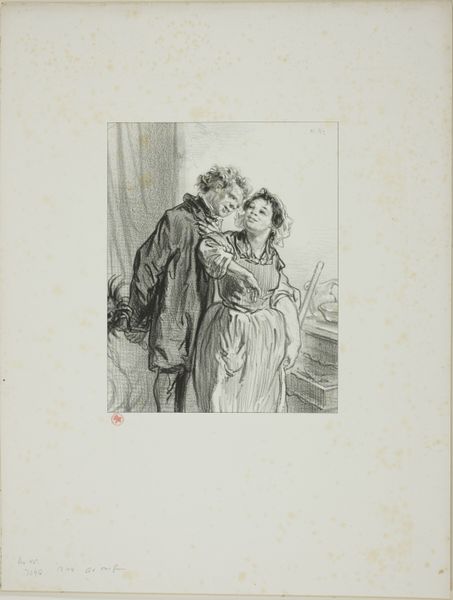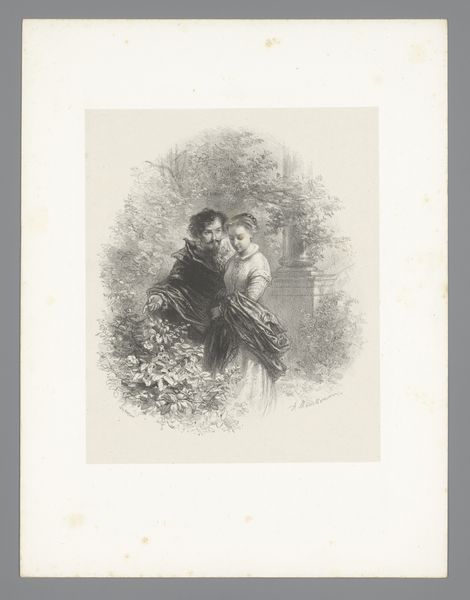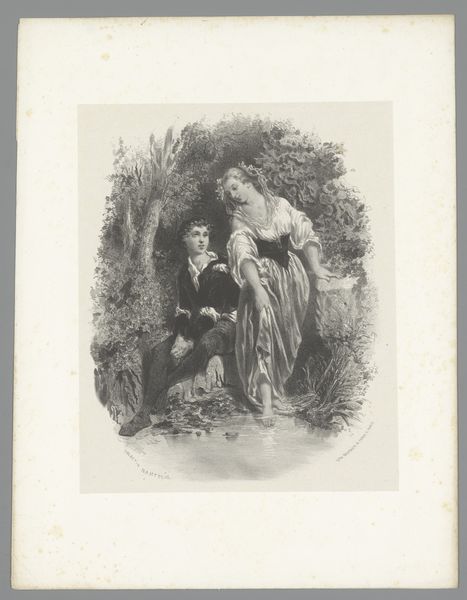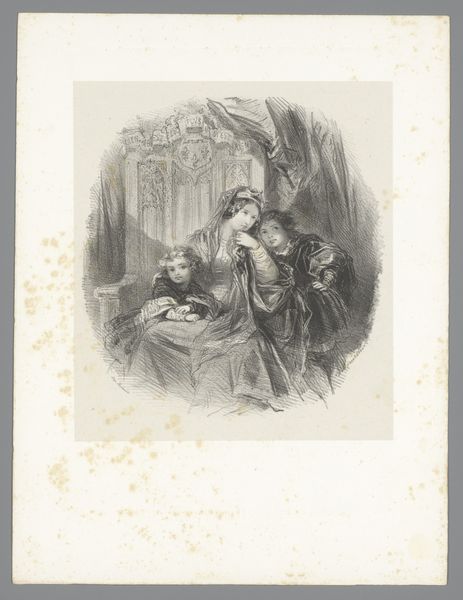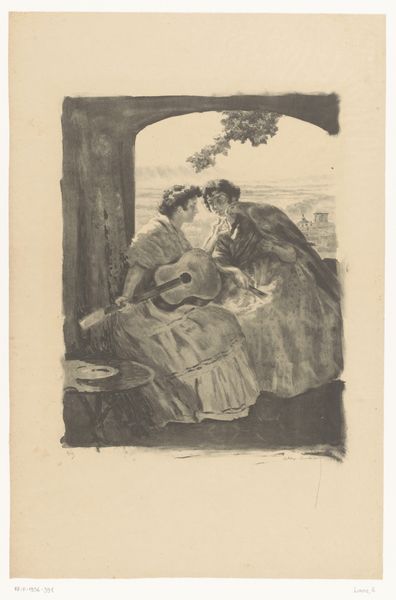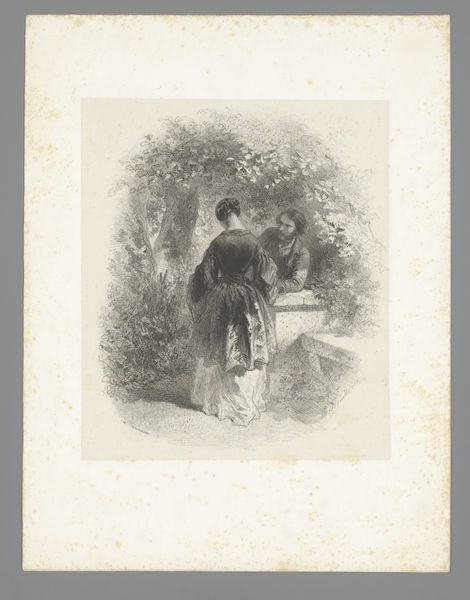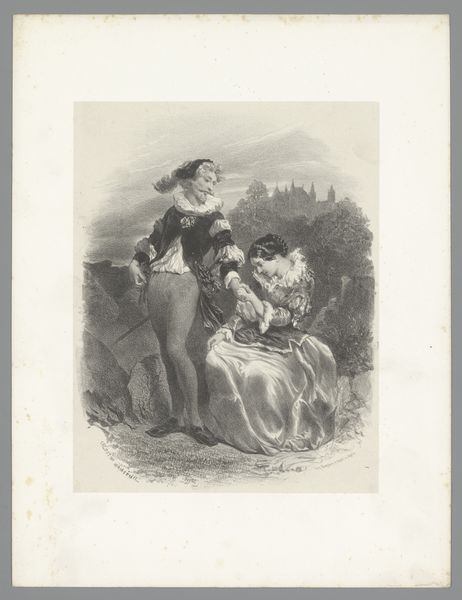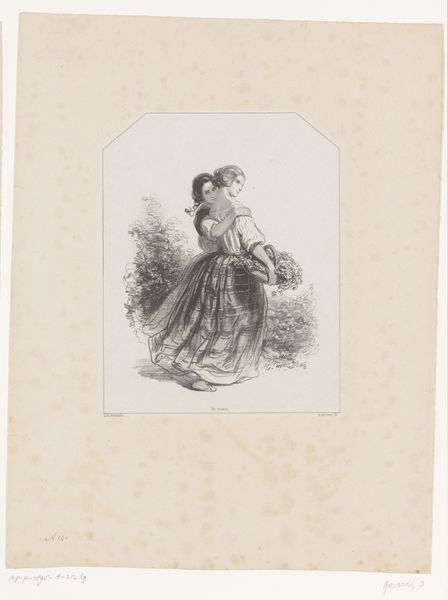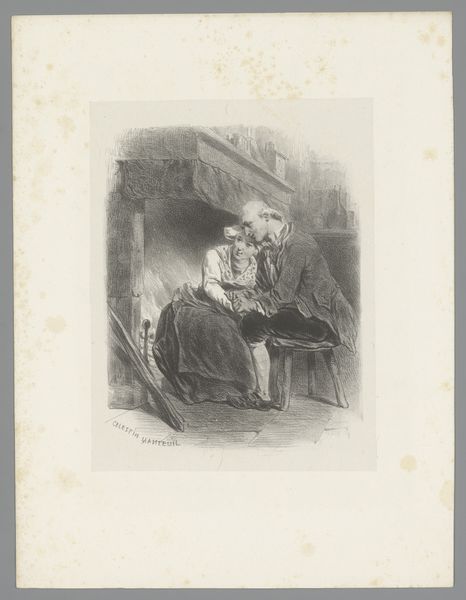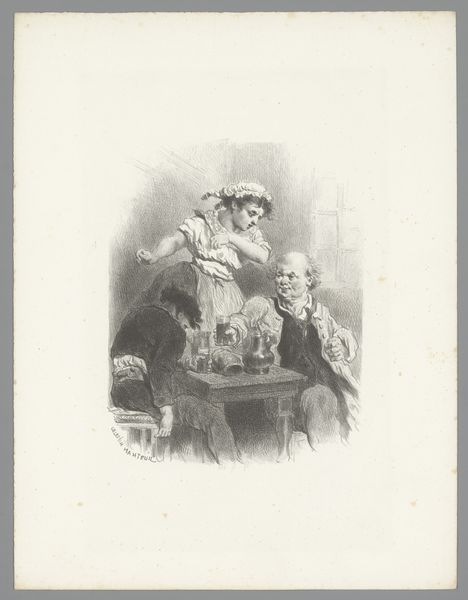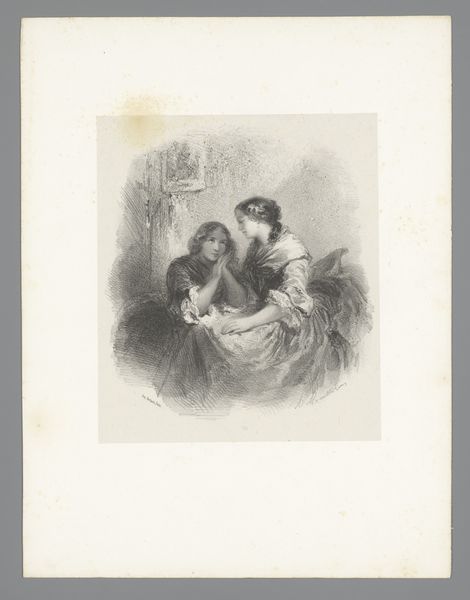
print, engraving
# print
#
landscape
#
figuration
#
romanticism
#
line
#
history-painting
#
engraving
Dimensions: height 360 mm, width 275 mm
Copyright: Rijks Museum: Open Domain
Curator: Today, we're looking at "Man en kind te midden van gebroken zuilen" which roughly translates to "Man and Child Amidst Broken Columns" by Célestin Nanteuil, dated somewhere between 1823 and 1873. It's an engraving. Editor: My first thought is how melancholic this image is. There's a sense of profound loss, even in the tenderness between the man and child. Curator: Absolutely. Romanticism often uses classical ruins to symbolize the transience of empires and the inevitable decay of even the grandest human endeavors. Here, the ruins, created perhaps with mass production of printmaking, provide a somber stage. Editor: I notice the inscription on the broken stone. It looks like an inscription. Do you know what it says? It must add another layer to the print’s symbolism. Curator: The text is difficult to make out but speaks of illusions vanishing at the dawn of life, that cannot last past the end of the day. It adds a dimension relating it to a morality tale about dreams of progress clashing with reality. Editor: Interesting. Thinking about the printmaking process, the choice of line is particularly striking here. Notice how it defines forms and adds to that sense of almost fragile emotion? Curator: Precisely. Engraving requires careful skill and it's a slower more controlled process of image-making than other prints like Lithographs. The detail adds a gravitas appropriate for history painting. Editor: It also seems to highlight the social aspect. Who was the target audience for prints like this? Were they meant to be mass-produced and disseminated widely, contributing to shared cultural values? Curator: Most definitely. Prints like this were key in spreading artistic ideas and influencing taste amongst a broader audience. Making art affordable. It contributed significantly to political and social debates of the time. Editor: I'm struck by how this artwork encapsulates a pivotal historical moment. A commentary on the human cost, if you like, in a beautiful and poignant way. Curator: Indeed. "Man en kind te midden van gebroken zuilen" functions as a powerful reminder of how artists use imagery and available materials to both reflect on and participate in their world.
Comments
No comments
Be the first to comment and join the conversation on the ultimate creative platform.

